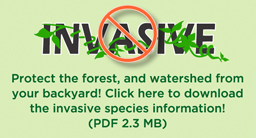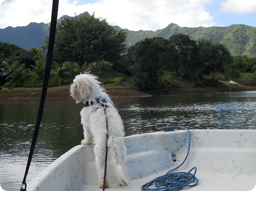|
|
|
|
 |
|
|
"Adopt the pace of nature:
her secret is patience."
Ralph Waldo Emerson
|
|
|
|
|
|
KRCA Homeowners
Board of Directors Meeting
Wednesday, December 2, 2015
6:30 – 9:30 pm
Kilauea Neighborhood Center
KRCA Annual Homeowners Meeting:
February 24, 2016
Kilauea Elementary School Cafeteria
Time TBA
Kalihiwai Ridge homeowners can find official minutes to KRCA Board of Directors meetings by setting up their own Account Log In at www.associaonline.com. They can assist you in getting your 7 digit homeowner number. After you have that you will then need to set up a User Name and Password. You can also set up having the Agenda to these meetings sent to you by e-mail the day before the meetings are held every month.

My Impressions
In this time of waiting I have been meeting at Kalihiwai Reservoir with the professional community of state and federal biologists as well as other homeowners and finally the Acting Project Leader of the Kaua`i National Wildlife Refuge Complex, Mike Mitchell. Coupled with the Kaua`i Nene specialists Jean Olbert and Dr Chris Vlautin, Kaua`i Albatross Network founder Hob Osterlund, and Executive Director of the Hanalei Watershed Hui Maka`ala Kaaumoana, excellent and expert guidance has been accumulated to form a picture of what the Kalihiwai Reservoir wildlife habitat could offer to the community at large and to those living on and around the lake, and by that I mean the 'fish, fowl, animal, vegetable and man'.
There is a biological history written here at the Kalihiwai Reservoir that goes far back from the 100 year history of the reservoir itself, built in 1920. It is reported that the endangered waterbirds have been here on the Hawaiian Islands for hundreds of thousands of years, as is also the case for many of the native aquatic sedges coming up at the KR shoreline, with seeds just under the soil preserved for hundreds of years. Once the reservoir lake was created it attracted the Hawaiian Coots and Moorhen (gallinules) to live in this wetland lake habitat. When we first moved here it was not at all uncommon to see 60-80 Coots living on the lake. Now we have about two dozen. Most of them Mike feels have probably gone to the KNWRC during our four years of inconsistent water level as they thrive on a consistently full lake, diving over four feet for our fresh water clams and crustaceans, using our native plants growing at shoreline in order to forage, breed and build their floating nests.
Kalihiwai Reservoir's lake had become for nearly 100 years an outstanding habitat for these now at risk endangered water birds that apparently have now in their relocation become somewhat of a challenge to the Taro farmers in Hanalei. To have them return from there, to come back to their home, will require the restoration of the dam and spillway to provide a consistently full lake, but it also is recommended we return the lake's island to native Hala trees instead of the invasive trees that are there now and plant stands of bulrush and native aquatic sedges around the edges of the island to create a safe breeding ground for future generations of Coots. This island would be safe from predation from dogs off leash, feral cats, and rats, which are relatively controlled around the lake as a whole compared to other wetland areas on Kaua`i.
This project could easily be done while the lake is kept low. Removal of the invasive trees and replanting the island with about 10 Hala trees in readiness for it someday being surrounding again by water from a full pool lake could be a very productive use of our resources and time. The six inlets could also be rehabilitated to remove invasive ground cover so the native aquatic sedges and bulrush can again take over as they are programmed to do in the seedlings evident everywhere you walk at shoreline. The inlets have been ideal for the Hawaiian Moorhens who are more secretive than the Coots as these parents generally stay close to their nests to defend their young while the sub-adults help raise the new chicks.
These two endangered water birds have cultural as well as biological significance. If we were to see the return of our 80 Coots Hob reports we would have 10% of the world population living on our lake. That is no small thing. Mike indicates it would also serve the Taro farmers in Hanalei and give the Coots and Moorhen a better foot hold for their breeding future. The Nene would of course also return and nest at lakeside again, as we have seen happen for years now. All these birds love the nearby lawns and use the lake for the safety of their young. An aquatic garden of delight for them all. So let's get to work and do our part to prepare the inlets and island for the return of the lake and the return of a hundred birds before our Kalihiwai Reservoir's 100 year anniversary in 2020. What a celebration that will be!
Until we meet again.
Aloha,
Maggie Lea

|
|
Suggested Readings:
Water Resources and Climate Change Adaptation in Hawai`i: 2012
Reference: Commission on Water Resource Management
Click here to download PDF file
Koamalu Volumes 1&2
by Ethel M Damon, 1931
A story of pioneers on Kauai and of what they built in that island garden
Sugar Water by Carol Wilcox 1996
Hawaiian & English definitions from the book:
wai - water, blood, passion, life
wai wai - wealth
pani wai - dam
water - transparent, odorless, tasteless, liquid, H2O

Wetland habitat non-invasive plant suggestions:
bacopa, makaloa, carex, aka 'akai, neke
kupukupu, laua'e
 
Links:
Hanalei National Wildlife Refuge
www.fws.gov/hanalei
Kauai Forest Birds Recovery Project
www.kauaiforestbirds.org
Sounds Hawaiian
www.soundshawaiian.com/birds
National Wildlife Federation
www.nwf.org
Kalihiwai Reservoir is a
Certified Wildlife Habitat
Ducks Unlimited
www.ducksunlimited.com
Fishing Notes
www.fishingnotes.com
Hawaii Audubon Society
www.hawaiiaudubon.com
Sierra Club Hawaii
www.sierraclubhawaii.com


Sufi at the helm of Moe Moku
|
|

